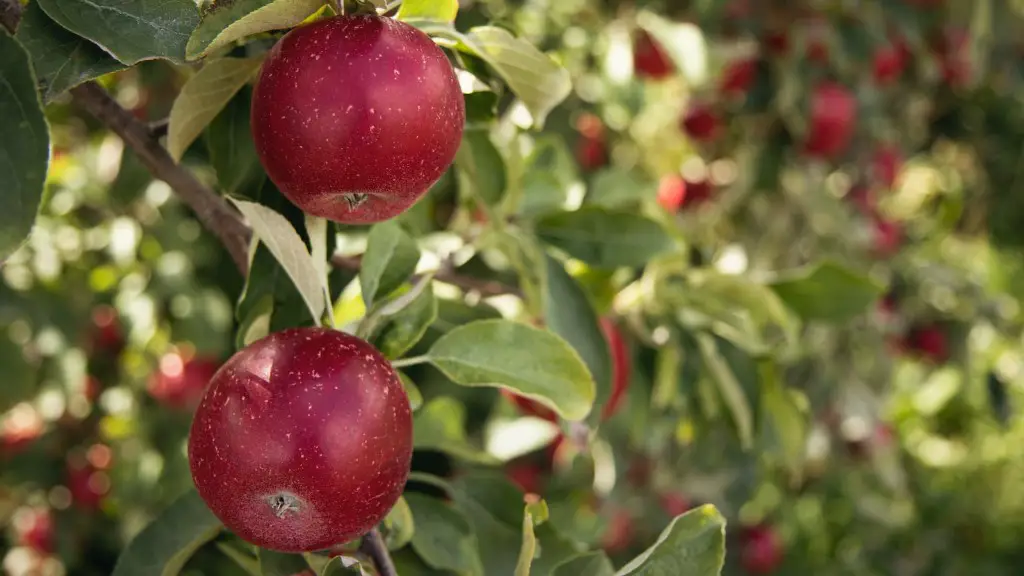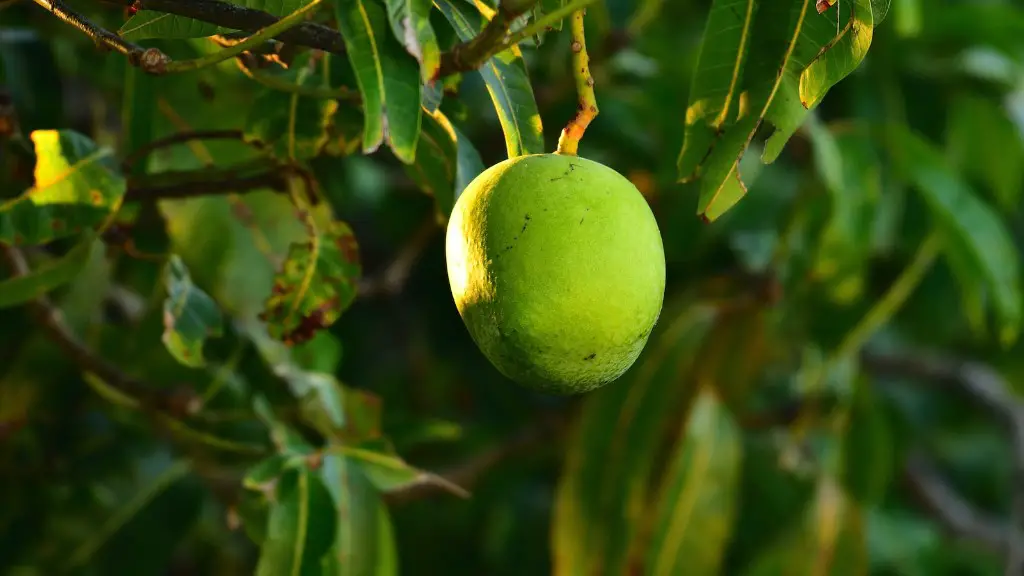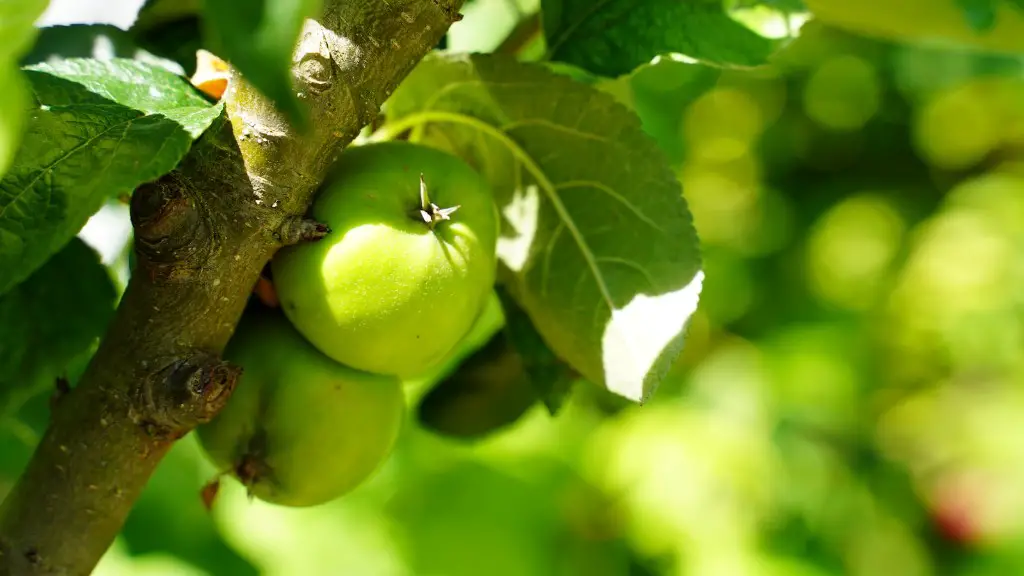Frost poses a great threat to apple trees, and it is essential to take measures to protect them. Backing away from a passive attitude towards frost and towards a more proactive approach is essential for successful harvest. Here are some tips for protecting apple trees from frost:
1. Plant apple trees in areas where the temperatures stay above freezing. Choosing sites with good air drainage can be beneficial in preventing frost. As a general rule, it is best to plant trees on lower-lying ground and avoid “frost pockets” such as hollows, depressions and shaded areas.
2. Apply fertilizer according to recommendations, as this will help ensure optimum growth and hardiness, which in turn will help protect the trees from frost.
3. Make sure the soil around the tree is well-drained and mulch generously to keep soil temperatures up.
4. If temperatures are forecast to drop below freezing, consider covering the trees with burlap or some other form of protective covering.
5. Make sure the tree receives plenty of water during the summer months so that it enters winter with good health and vigor.
6. If possible, take advantage of the warmth generated by a south-facing aspect.
7. Monitor the weather and the trees closely during the winter months and be ready to act quickly and decisively if frost is forecast.
Choosing an Appropriate Variety
It is important to choose an apple variety that is hardy enough to withstand the temperatures in your area. Not all apple varieties are suitable for all areas, and even within a given apple variety there are differences in chill-hours required to ensure a successful harvest. Your local nursery should be able to advise you on the varieties best suited to your area, as well as providing guidance on when to plant the trees.
If the area experiences regular frost, consider opting for varieties with a high chill-hour requirement, as these varieties are more likely to survive harsh winter conditions. Choose apple varieties with a well-rounded bud-break pattern; this will provide protection against late-season frosts and ensure a better chance of successful fruiting.
Make Use of Windbreaks
Making use of windbreaks can help protect apple trees from frost. Planting windbreaks on the south and west sides of the orchard will protect the trees from the winter storms that usually come from the north or northeast. Windbreaks can also reduce the wind speed at the orchard level, allowing temperatures to rise slightly and frost damage to be reduced.
Windbreaks can be made from shrubs, trees, or even a staked-out netting. They should be planted as close to the orchard as possible to be most effective. Opt for evergreen trees as these will provide protection all year round.
Watring Regimes
A good water regime during summer can also help apple trees survive frost during the winter months. Make sure the trees receive the necessary rains and irrigation during the summer months, as this will help the trees build up the carbohydrates and nutrients they need during the winter.
Watering should be done at least once a week, ideally every two weeks during the summer months. Water deeply, soaking the soil thoroughly to a depth of at least 12 inches, making sure all the roots get a good soaking, as this will help the tree store the necessary resources to help it survive winter temperatures.
Consider Spraying Early
Spraying apple trees with a form of anti-dessicant early in the winter season can also be beneficial in helping to protect against frost damage. Dessicant spray helps to lock in moisture, which can help prevent damage to apples and other fruit during a frost event.
It is important to bear in mind that the spray may need to be applied several times a season to be effective, and this will depend on the type of spray used. It is also important to note that there are various safety considerations to bear in mind when using any type of dessicant spray, so it is important to ensure you follow all instructions carefully.
Protecting From Frost with Pruning and Training
Pruning and training apple trees can reduce the amount of damage caused by a frost event, as this reduces the amount of exposed surface area of the tree. Pruning and training can also help the tree reach an appropriate balance of vegetative and fruiting shoots, and encourages strong and healthy growth.
To protect the tree from frost it is important to prune to a fruiting bud and to avoid pruning too severely. Pruning and training also encourage the production of laterals and water shoots which will further reduce the amount of frost damage the tree receives and will hold the tree’s energy in reserve.
Pruning and training are best done in the winter or early spring when the tree is dormant, as this gives the tree more energy and time to produce new shoots and buds before spring arrives.
Mulching Around the Tree
Mulching around the tree is also an important action in helping to protect it from frost damage. Mulches help to keep the soil temperature higher and provide insulation for the tree’s roots, which allows the tree to shed heat more quickly. This minimizes the amount of time the tree is exposed to temperatures below freezing, and thus reduces frost damage.
Organic mulches such as compost, straw, hay and grass clippings are the best type of mulches for apple trees as they provide good insulation and help to keep the temperatures lower for longer. Mulching in the fall is best, as this allows the mulch to settle in during the winter months and provide maximum protection during times of frost.
Utilizing Heat Sinks
Using heat sinks such as rocks, bricks or even concrete blocks can help protect apple trees from frost damage. Placing a large rock or two in the orchard will help store the heat during the day, and release it slowly during the night, helping to create an insulated microclimate and protect the trees from frost.
For larger orchards, consider using concrete blocks placed around the perimeter of the orchard. As these blocks will absorb heat during the day, they will help keep the temperature of the soil below the trees a few degrees higher, and thus provide some protection from frost.
Timing is Everything
Timing is everything when it comes to successfully protecting apple trees from frost damage. Make sure to observe the weather forecasts, and plant trees in areas where the temperatures are least likely to fall below freezing. Monitor the trees closely during the winter months and take action to protect them if needed.
Using a combination of these techniques—choosing a hardy variety, making use of windbreaks, establishing a good watering regime, spraying with a dessicant, pruning and training and mulching around the tree, and utilizing heat sinks—is essential to ensuring your apple trees survive the winter frost.



